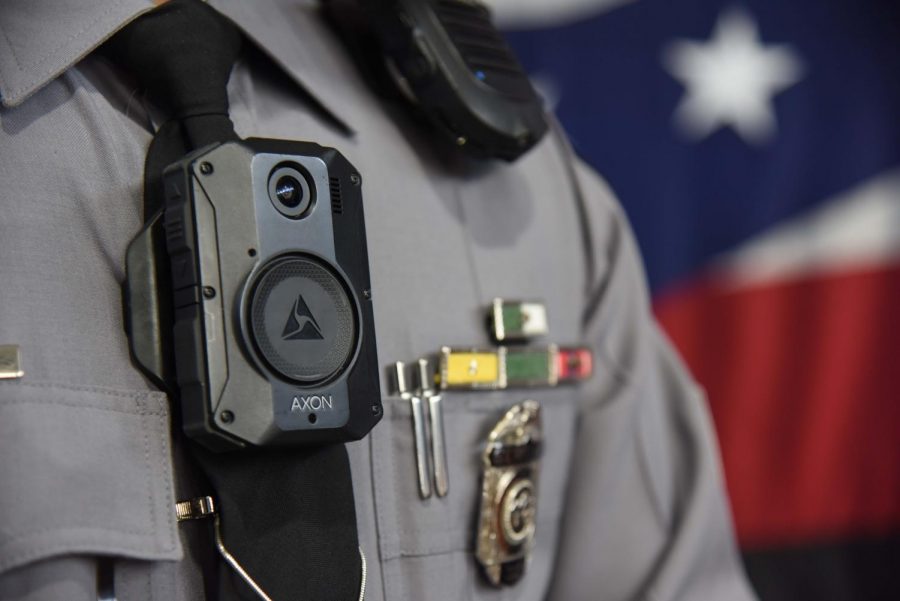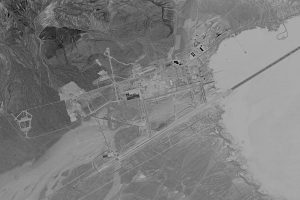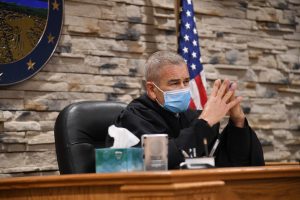Local troopers will soon wear body cameras
Ohio State Highway Patrol Sergeant Brice Nihiser displays one of the agency’s new Axon body cameras.
November 24, 2021
Ohio Governor Mike DeWine announced Tuesday afternoon that by May of 2022 nearly all state-employed law enforcement officers will wear body cameras to supplement their in-car cameras.
The devices are part of an upgraded suite of technologies that will be installed in the agency’s patrol vehicles as the force looks to prepare itself for the next decade.
According to DeWine, the body cameras will increase transparency and shed light on the heroism and professionalism of troopers as they patrol Ohio’s roadways.
For many in the profession, body cameras have seemed like the next logical evolution of technological evidence gathering. The devices have become more compact and costs have fallen to a justifiable level where many agencies can rationalize the expense.
Ohio State Highway Patrol Colonel Richard Fambro, a 30 plus year veteran of the force and the senior-most individual at the agency, was one of the first troopers to pilot a dash-mounted camera in his cruiser at the beginning of his career.
Over the years, the agency has continually adopted technologies that promote transparency as well as officer safety. That includes ensuring that since the late 1990s every state-owned vehicle making a traffic stop has had a recording front-facing camera, to the implementation of a state-wide full-coverage radio network, MARCS, providing troopers with nearly ubiquitous push-to-talk communications since the early 2000s.
According to Fambro, since January of 2018, the agency had made over 3 million traffic stops. During a press conference Tuesday, the Colonel said he is confident that the additional viewing angle will showcase the excellent and high-level policing the public has already come to expect from his officers.
“It provides another layer of transparency,” said Fambro. “And we welcome that.”
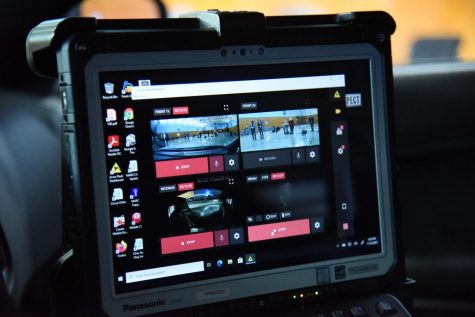
The body cameras are part of a new highly advanced in-car system of evidence collection.
Previously, patrol vehicles featured both a front-facing camera and a rear-seat camera. The footage had to be extracted and uploaded to a state-maintained file system.
The new setup includes a double-lens dash-mounted camera, that provides both a wide-angle and close-up view, a rear-seat camera and the chest strap attached body-worn camera.
According to DeWine, it will give both the public and, if necessary, juries, a first-person account of how events transpired that will supplement a trooper’s written record.
The total expense of the program over the next five years is $15 million dollars and will include both the devices as well as continual storage costs. Money will come out of the agency’s general fund.
“It will help them better serve the public and provide accountability to reports,” said DeWine.
In total, 1,550 Axon body cameras and 1,200 vehicle systems will be assigned to state-employed law enforcement officers. That includes troopers, their supervisors, those in the agency’s motor carrier enforcement division, their supervisors, Ohio State Highway Patrol Police Officers, such as those who patrol the State House, and members of the state’s investigative unit.
For those assigned to a patrol vehicle, as soon as the lights are activated, the camera is alerted, and following the opening of the front driver door, the camera not only begins recording but provides 90 seconds of an audio-stripped lookback. It can also be activated manually by a large button on the front of the device.
The body-worn cameras, according to the company’s website, provides higher video quality resolution than the human eye, especially during dark or dim conditions. Officials say they hope the public and/or a potential jury would be understanding that a gun, for example, may be able to be seen on camera, but wasn’t visible to an officer due to poor lighting.
The dual-lens dash camera will offer a 90-second look back as well. The rear-seat camera offers a 30-second look back. All recorded incident footage is wirelessly transmitted from the car, acting as an intermediary between the devices, by a Verizon AirCard to an Axon data center where the footage is securely stored ‘in the cloud.’
According to Sergeant Brice Nihiser, the devices give an extra layer of accountability to a trooper’s written statement that makes the case more solid for prosecution and accountability.
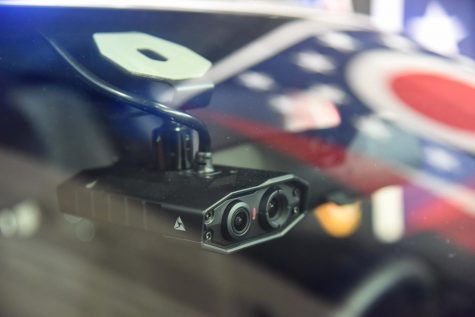
The suite of devices is also capable of providing live feeds to a command center for greater situational awareness.
In responding to reports of an active shooter or a mass casualty incident, video and audio footage, as well as the position of both the trooper and his or her vehicle, can be accessed, giving commanders the ability to oversee the scene and respond with additional resources accordingly.
The batteries are designed to last for an entire shift, even if the device is actively recording or transmitting the feed the entire time.
DeWine said that Axon was selected after an extensive selection process that involved a thorough evaluation.
An official with OSHP elaborated on the governor’s remarks by adding that after each company installed their equipment in a state-owned vehicle, they were taken and exposed to a variety of real-life situations, such as low-light, to see the quality of the footage. To ensure bias-free scoring, company identifications were stripped from the videos, and individuals were tasked with ranking each of the four bidders.
Ultimately, Axon prevailed and was selected. The exact details of the contract are still being negotiated.
While the addition of body-worn cameras will add both extra evidence to handle and complexity in responding to public record requests, both DeWine and Fambro said they believe the extra transparency is worth it.
The new body cameras and vehicle-based systems will be rolled out in stages beginning this month with the Columbus District and ending in May of 2022 with the agency’s headquarters. The Cambridge District, which encompasses 12 counties, including Muskingum, Perry, Morgan, Coshocton and Guernsey Counties, is slated to receive their devices this upcoming January.
“By investing in these cameras, we’re not only giving our troopers the tools they need to better protect the public, but we’re also giving the public another reason to have confidence in the professionalism of the Ohio State Highway Patrol,” said DeWine.
The Governor had previously worked with the Ohio House and Senate to establish a $10 million dollar grant program to assist agencies with the cost of testing or implementing body-worn cameras. He acknowledged, however, that the steep costs make the devices unattainable for many budget-strapped departments.
Currently, Zanesville Police have dash-mounted cameras and have piloted body-worn cameras. The Muskingum County Sheriff’s Office does not employ either. Some villages, such as New Concord, provide body cameras for their officers, while some local law enforcement officers purchase their own out of pocket.

